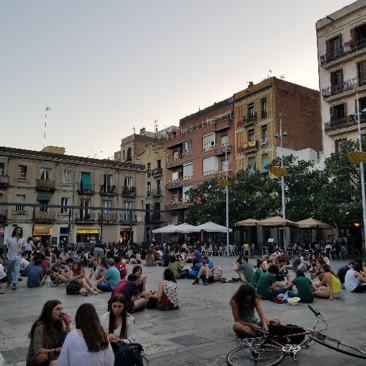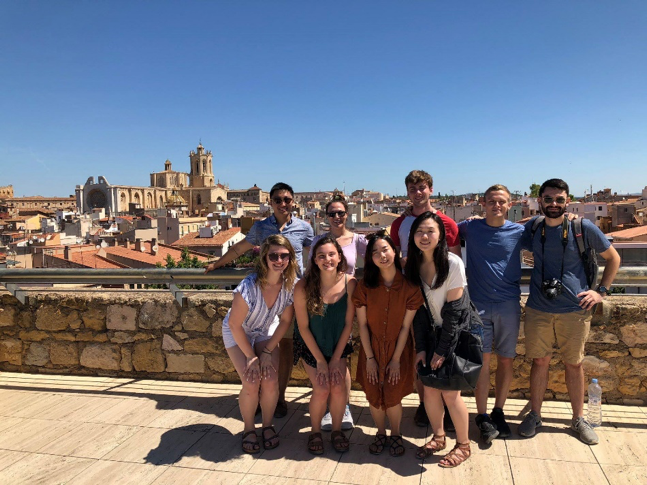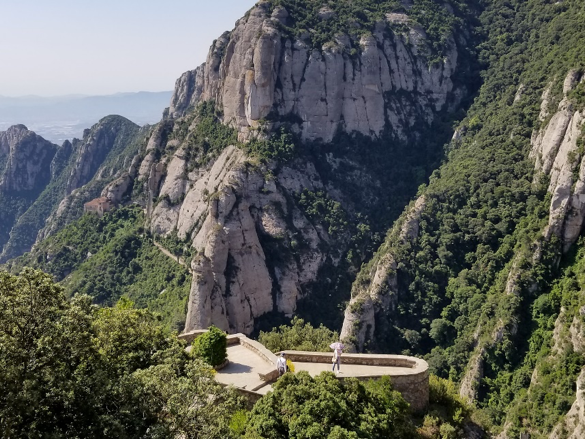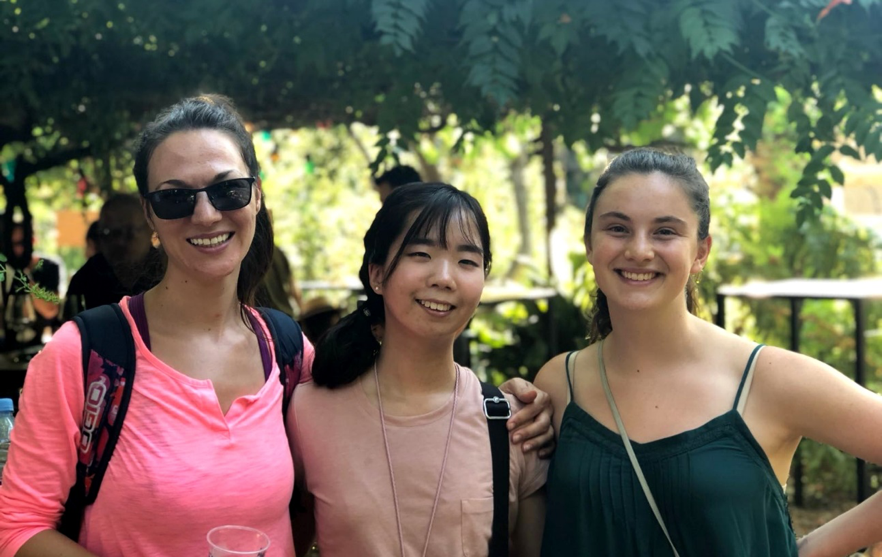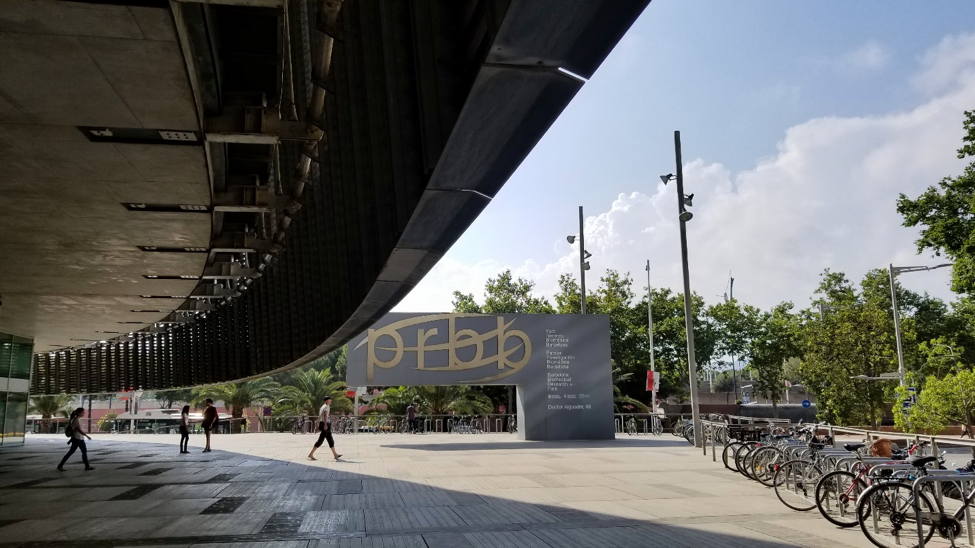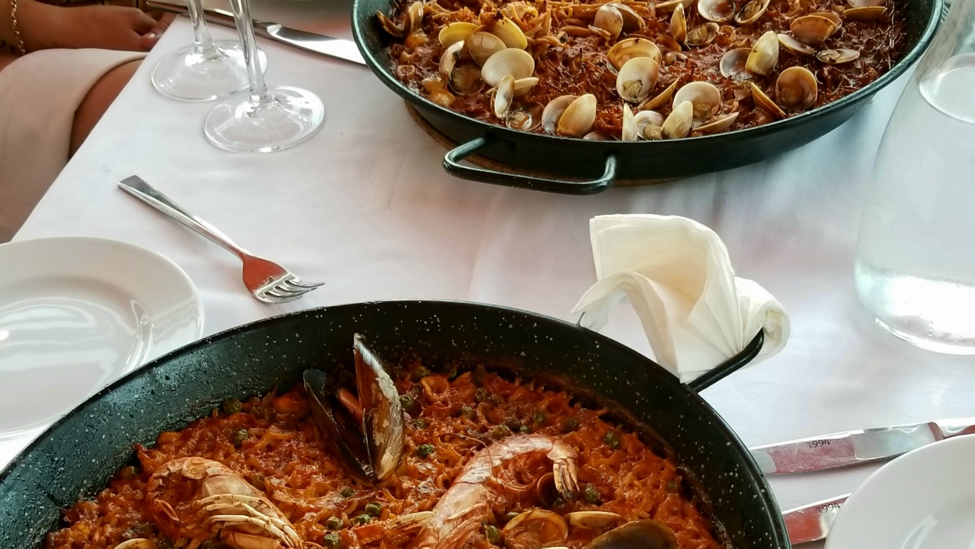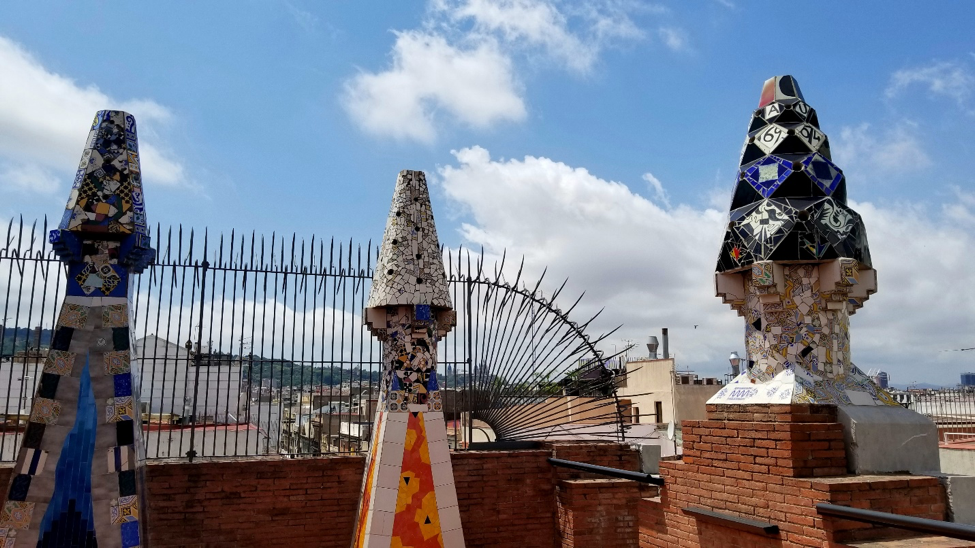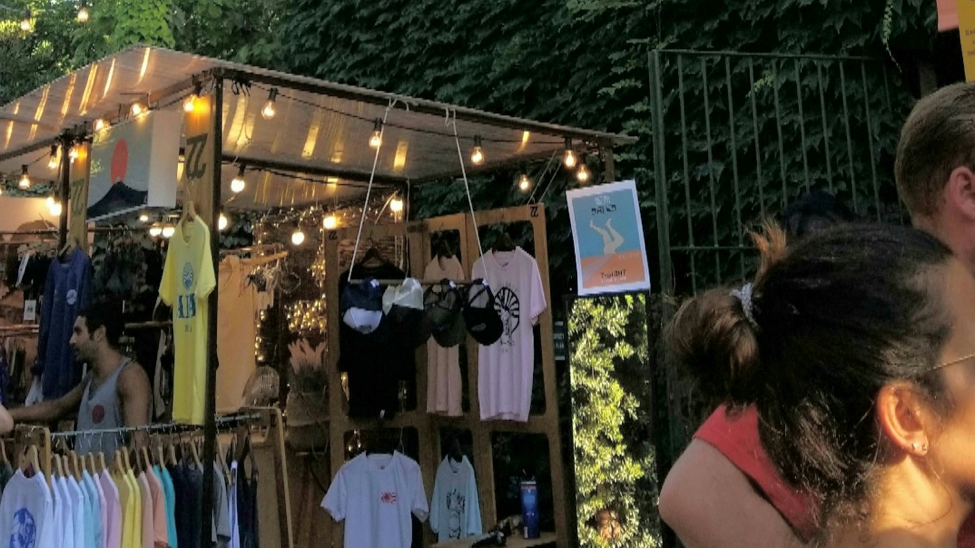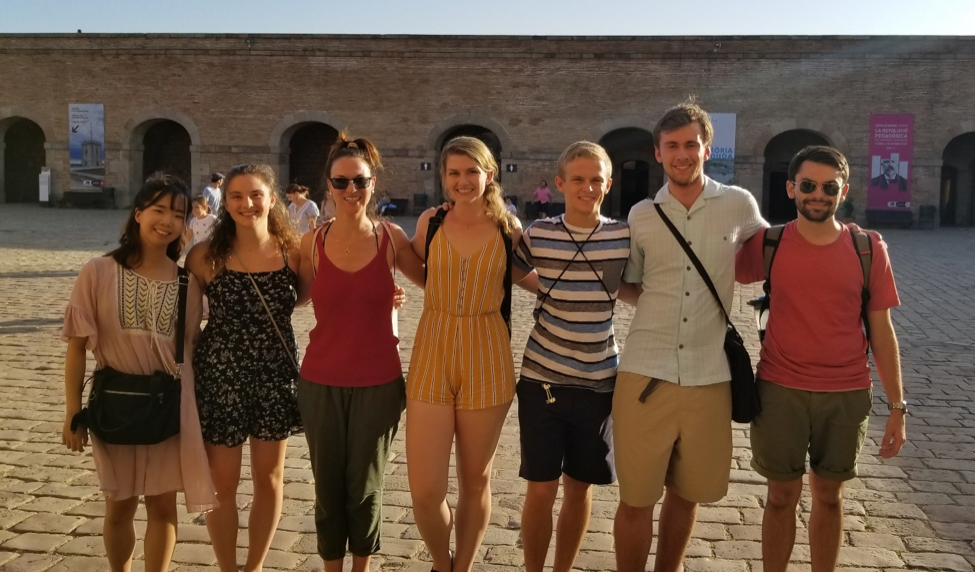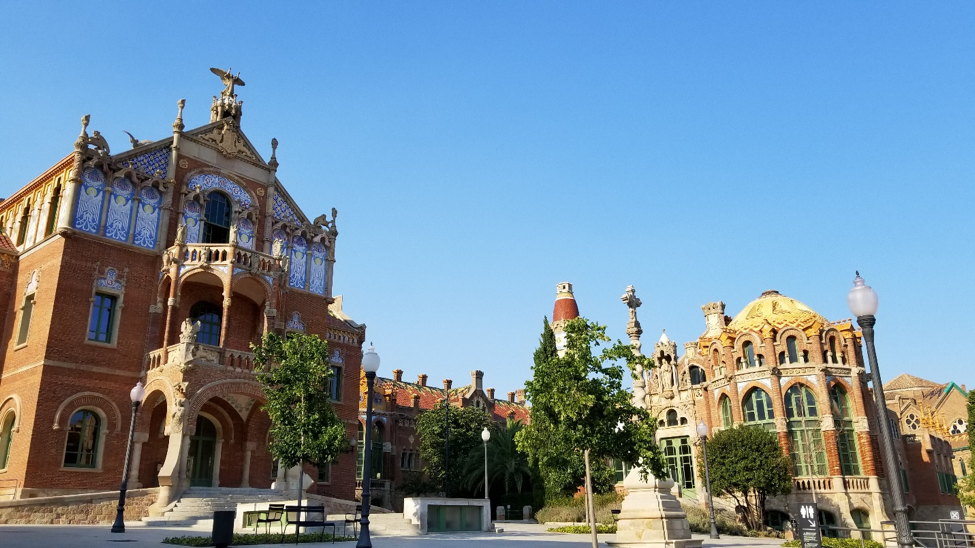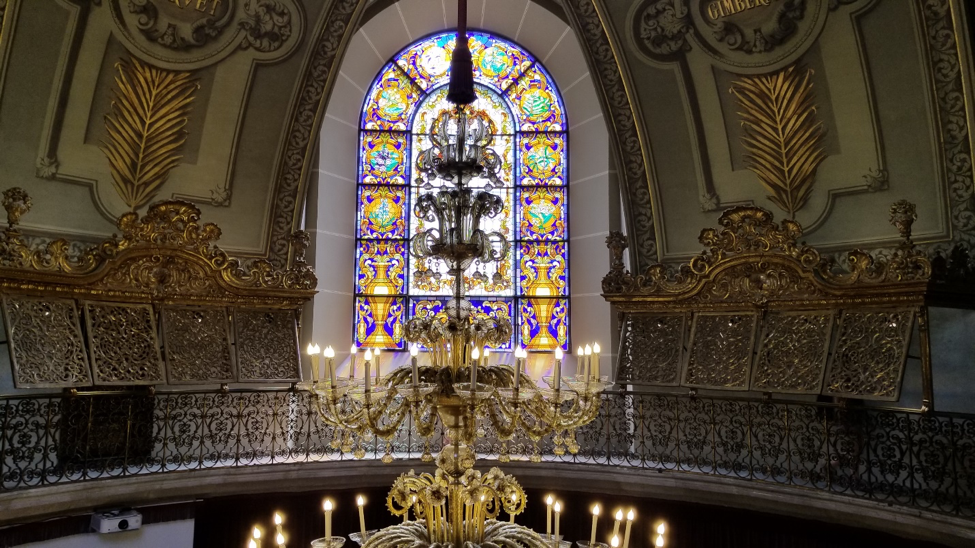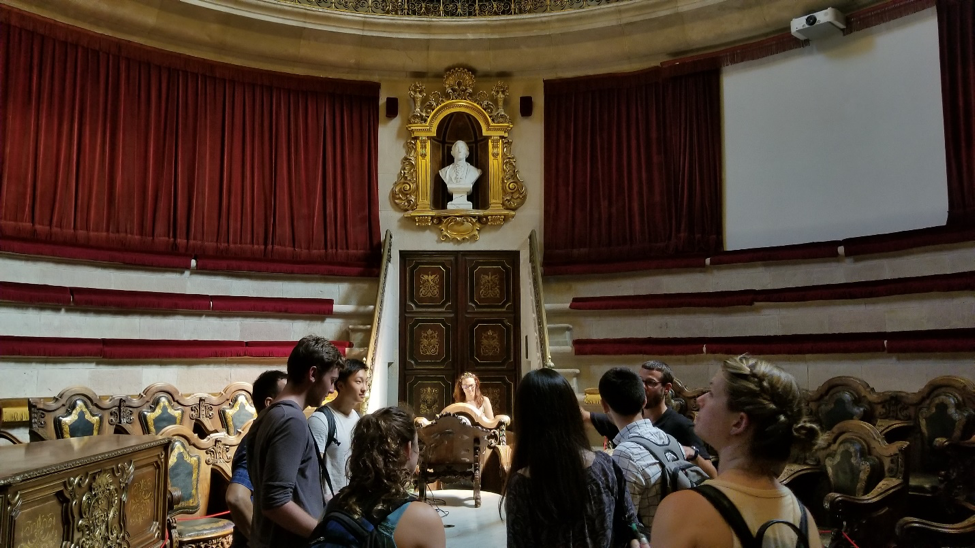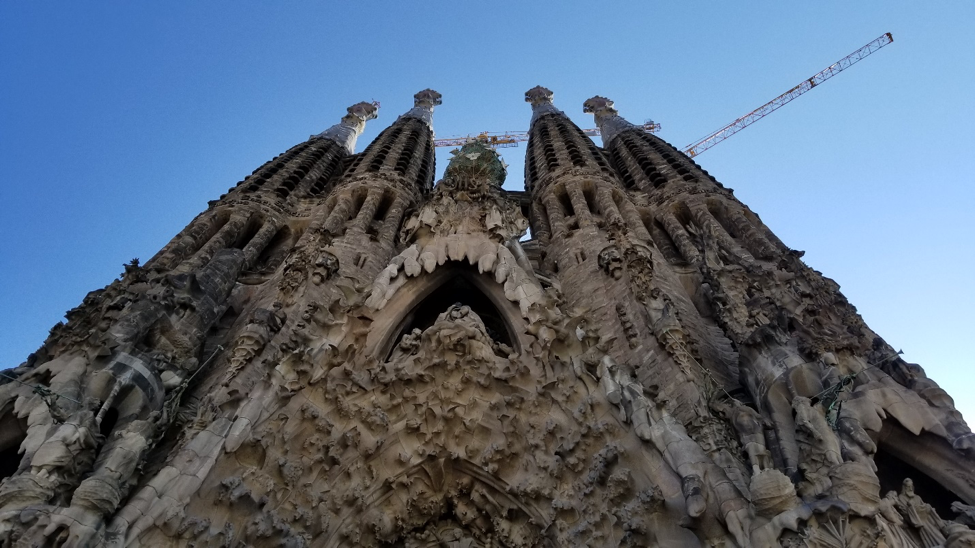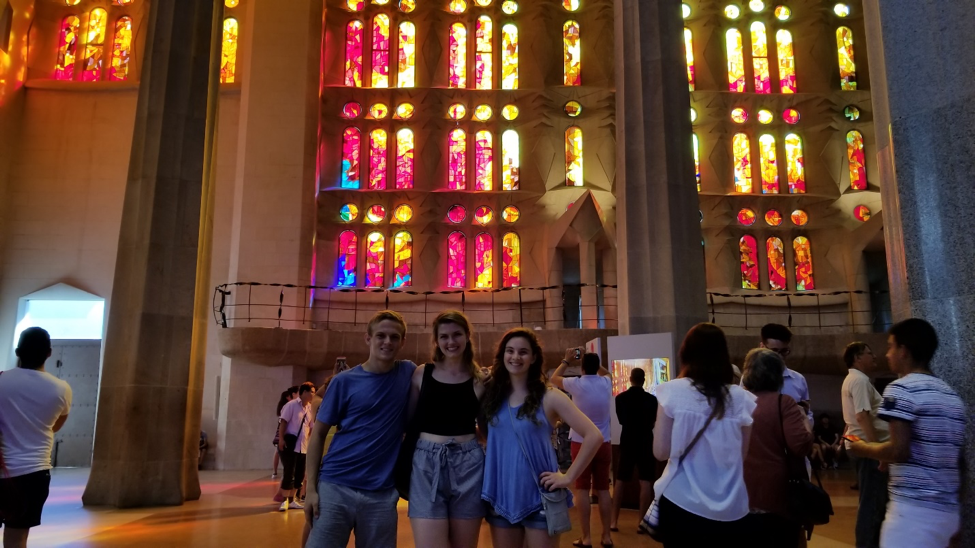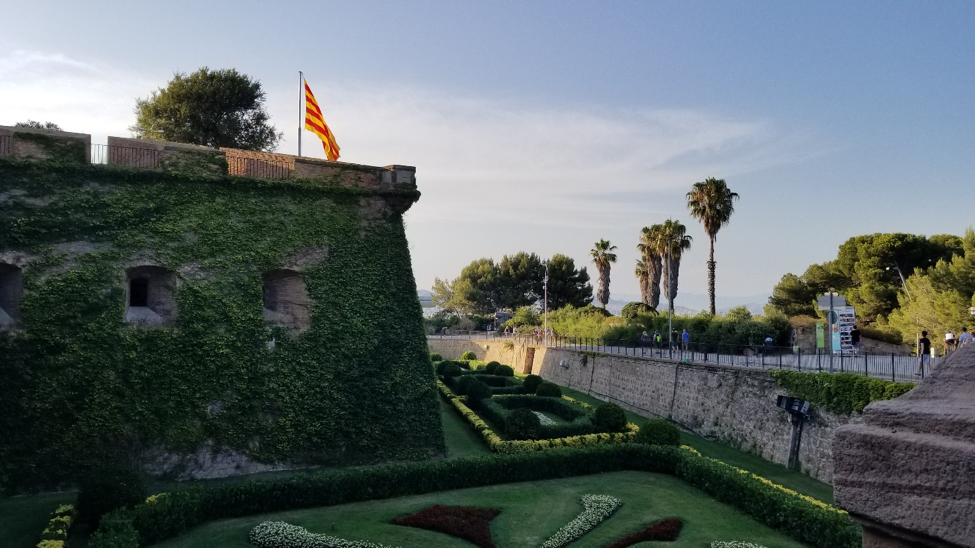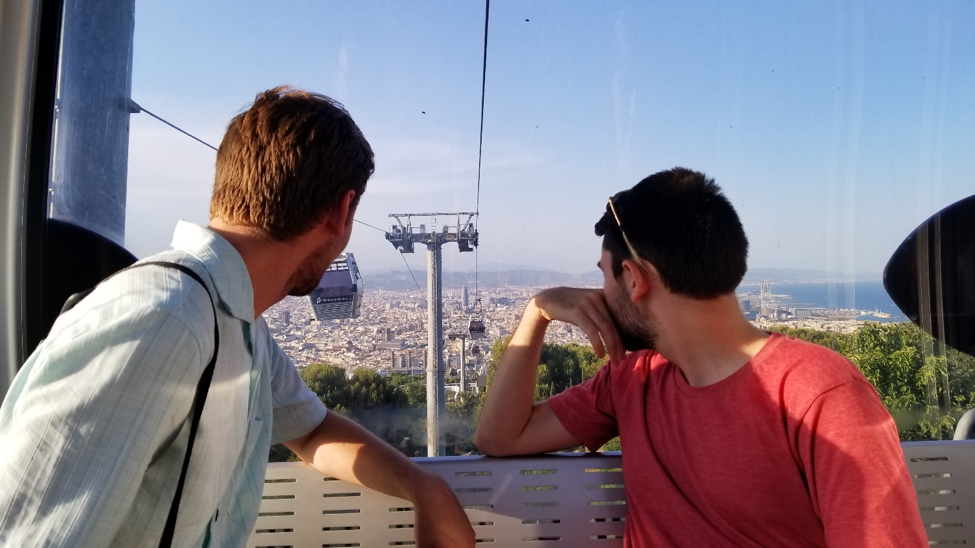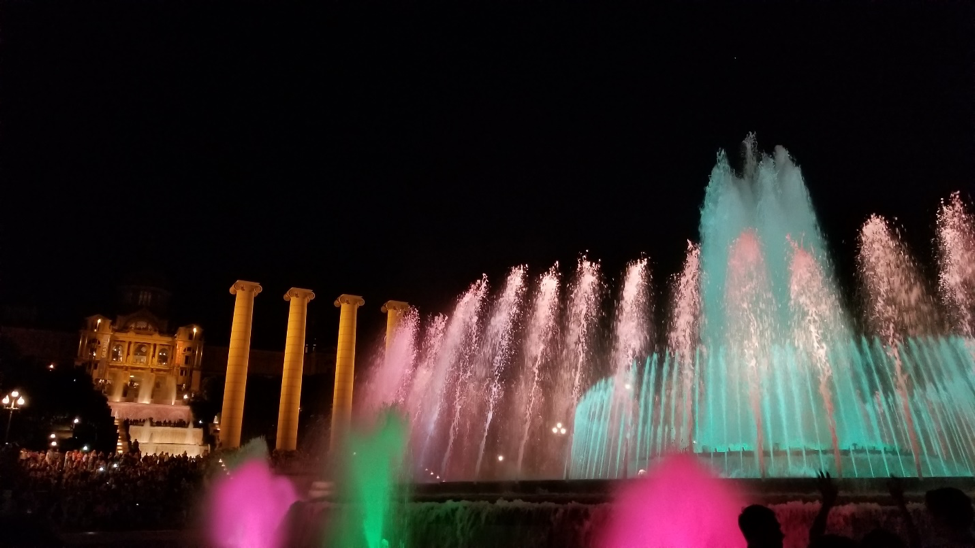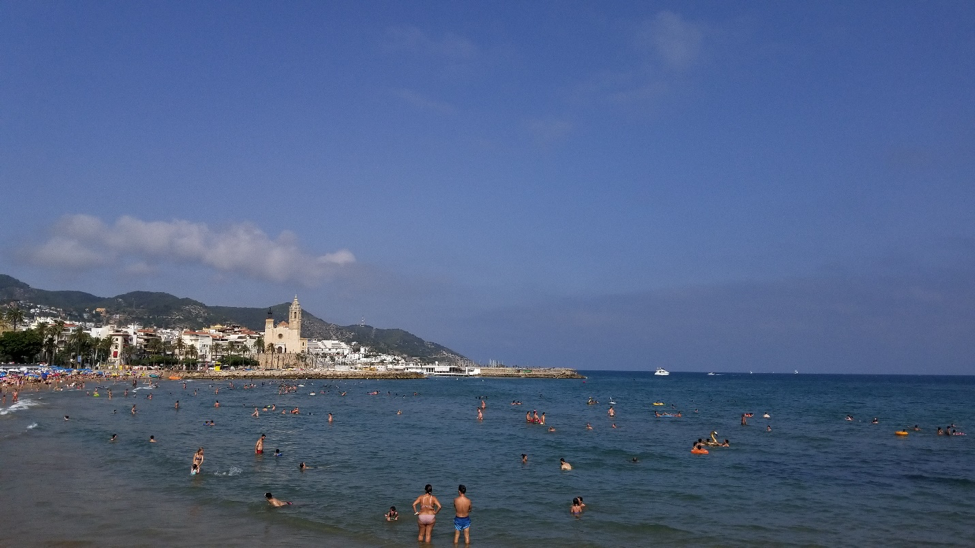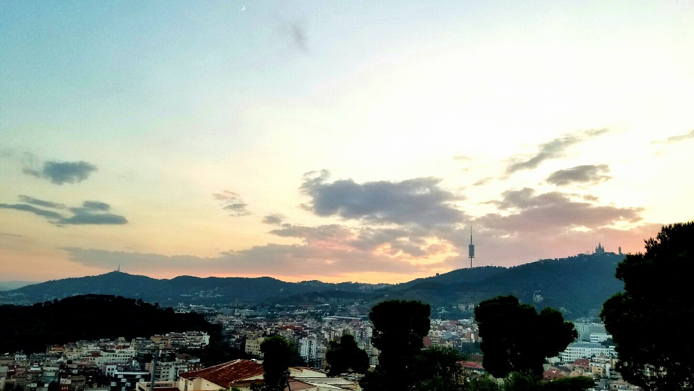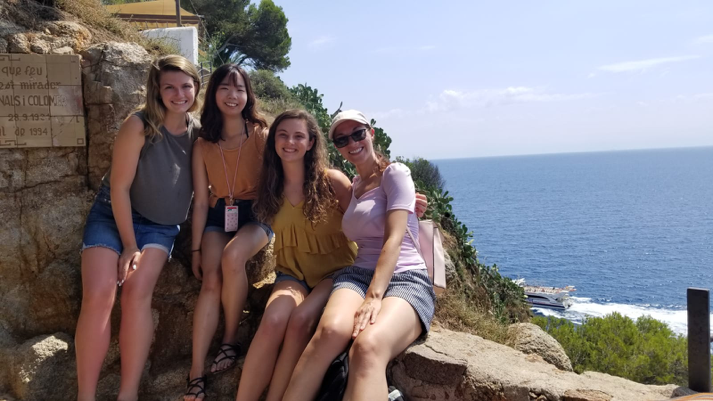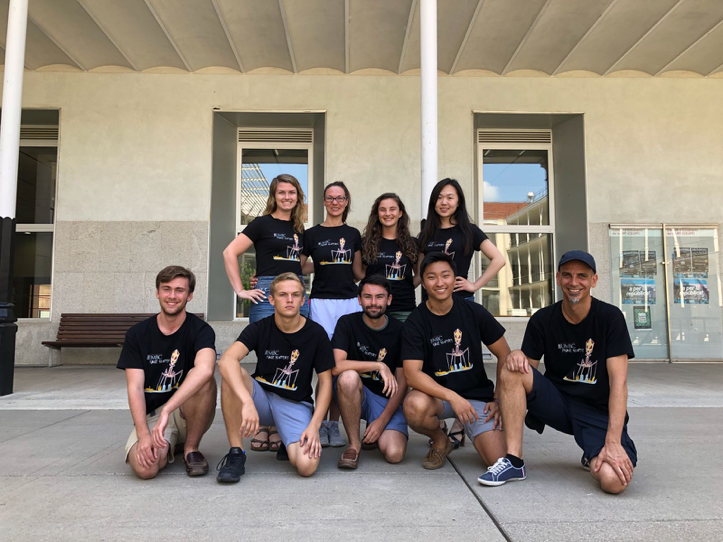Jessica Kweon
UMBC Faculty-Led: Biology and Spanish Language in Barcelona
Major: Biological Sciences
Jump to: June 19, June 26, July 1, July 10, July 19, August 3
Hola from Barcelona, Spain! As a brief intro, my name is Jessica Kweon and I am a rising sophomore Biology student. I’m studying in Spain at Pompeu Fabra University as a part of the Phage Hunters Lab course led by Professor Ivan Erill from UMBC. I will be writing a series of blogs documenting my experience here, so keep a look out!
Day 1
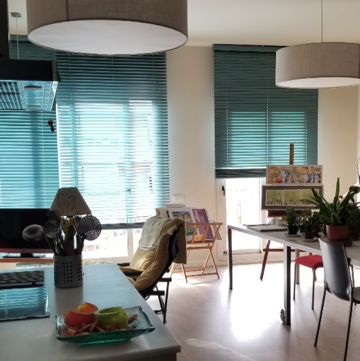
After a long flight, most of our students met our host families at the meeting point. What is intriguing about the homestay experience is that all our participating students live in different neighborhoods in the city, each unique with different eateries, sights, and ambiances. Every family is also just as individualistic. For example, many families are Catalonian (not Spanish; they are different!) and are excited to show students their culture, such as the food and language.
Day 2
During our first day, we had an orientation with Academic Solutions, our program coordinators, at their office in Avinguda Diagonal. We then met Professor Erill and enjoyed lunch at a restaurant. After, our group visited the outlet stores nearby and explored the rest of the city, including a church and street market. We all shared different tapas by the beach, which were delicious, and enjoyed a Flamenco performance in the restaurant. That night, we also ate crepes at a café.
Day 3
Saturday was beach day: we all went to La Playa de Barceloneta. The metro ride to the beach, while packed, was enjoyable; live performers played popular songs like “Bailando” and “Despacito” on their instruments. For dinner, we ate at a Catalonian restaurant. Interestingly, black rice, which is tainted with squid ink, can temporarily stain teeth and lips! After, we all enjoyed gelato at Gràcia (which for me, certainly trumps American ice cream) and sat at a square called Placa del Sol, a “hidden gem” for youth in the city.
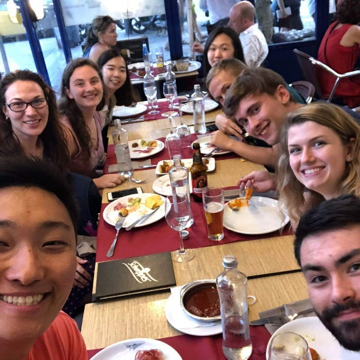
Day 4
On Sunday, Jaime led a bus tour around the city, pointing to areas of the city we could visit, such as Montjuic. Our final stop was the Expiatory Church at La Sagrada Familia, a church designed by Gaudí. Started in 1882, it is still incomplete (apparently it doesn’t run on public funds and solely ticket sales and donations). The church has 18 pillars but only a few of the lower pillars are complete; the final pillar of Jesus is estimated to be 172m tall! The east side of the church is very detailed and gothic, the style of Gaudí. But the west side is more geometric, almost abstract; this side was designed by a different artist roughly a century after the original plans of Gaudí were destroyed during the Spanish Civil War. While I have yet to go inside, I intend to do so sometime during the next few weeks.
That evening, we met students from College Park who are also studying abroad. We enjoyed small sandwiches and desserts (snacks between lunch and dinner are called meriendas), and beverages. Fanta here is so different; it’s mixed with actual orange juice! Likewise, there is a popular chocolate drink, called Cacolat, that tastes like a rich, dark-chocolate YooHoo.
Moving forward
I quickly grew out of homesickness after the first day. The city of Barcelona is wonderful! Full of art, history, and culture, I am excited to call this place home for the next 6 weeks. Transportation is so accessible – I personally walk and ride the metro to get to my destinations. I am so excited to see more of and outside of the city these next few weeks.
More Trips and The Start of Classes
Day 5: Tarragona Trip
After the bus ride, our group arrived to the city of Tarragona, full of Roman monuments and historic charms. Our tour began at the ruins of the Roman amphitheater, where gladiators once fought animals for the entertainment of both the lower and upper classes. We then passed through the Roman Praetorium, which were long tunnels where viewers were kept before seat distribution. After, we walked (many) stairs to the top of Torre del Pretorio Romana. Though it was quite the workout, the view was absolutely stunning, with several of Tarragona’s landmarks in sight.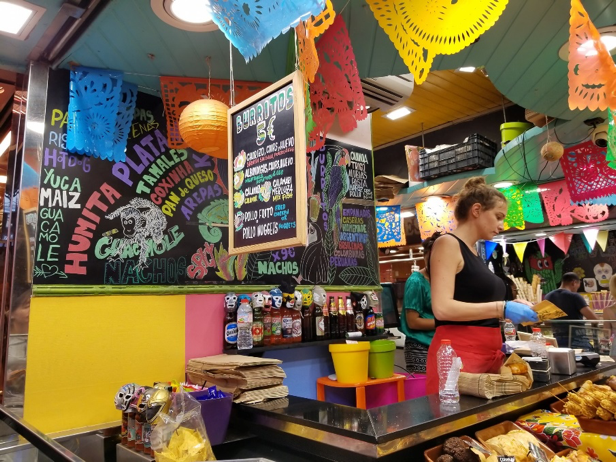
After passing through the streets of Part Alta, known for its yellow stonework (and tourism shops), we stopped for Café con leche at a nearby café. After, we saw the scale of Taracco, a mini model showcasing all of Tarragona. We then stopped by at the Cathedral and walked along the Roman Walls before heading to lunch at the Tiberi. A buffet-style, Catalonian restaurant, there was a wide selection of foods.
After a hearty lunch, I enjoyed the nice, summer weather while sharing chocolate-covered churros with my group in Rambla Nova. While waiting for the bus at Placa dels Carros, we could enjoy the view of the bright, blue Mediterranean Sea.
Day 6: Grácia
After the trip, we walked down La Rambla. A street with several stores and boutiques lining along its sides, it was a bustling, lively area. Also, in La Rambla is La Boqueria, a large, street market filled with vendors selling fruits, snacks, gelato, meat, cheese, vegetables, and other goods. With high quality and reasonable prices, the market is certainly a hub for food and groceries. La Rambla also has a popular square called Placa de Reial, with restaurants lining its borders and a fountain at the center. There are also a lot of fun entertainers who dress up like statues but make movements with tips!
Day 6: BIOL 316L Start and IRB Visit
Today was the first day of classes for BIOL 316L with Dr. Erill. Today was more of a review and introduction sort of the course. Since I have not taken genetics before, I was confused at first by the content. However, with closer inspection, the content actually has elements I have learned during my introduction Biology classes. Furthermore, my classmates have been more than willing to help me with harder or unfamiliar concepts.
After class, we went to the Institute for Research in Biomedicine in Barcelona. With other students from different universities, we were exposed to the amazing work IRB does in health and the life sciences as well as its global impact. Afterwards, we were all separated into groups and toured different segments of the facility. I was able to visit the immunohistochemistry and light sheet spectroscopy departments, which had incredible technology and image-processing capabilities. The visit really inspired me to continue to consider research in biology in my future!
Day 7: Spanish Placement and Orientation
Today was a day more focused on Universitat Pompeu Fabra stuff. Although we are taking a UMBC Biology course abroad, our Spanish course is by the Barcelona International Summer School. In order to determine our level, we took a well-rounded placement exam that covered grammar, speaking, and writing. Although it seems daunting, the staff emphasized that there was no pressure and that we can stop when the questions get too hard (I decided to push through the whole thing – though I certainly do not know how many I actually got right!)
Afterwards, UPF held an orientation for its students. We all received free UPF folders and magazines. Additionally, the study abroad staff introduced themselves and held presentations on the different events and resources were available to us on campus, including excursions, computer and library access, and more!
Day 8: Montserrat
Translated to “saw mountain”, Montserrat is a mountainous area in Barcelona that holds religious significance to Catalan people. With other UPF students, we traveled to the town by bus. Interestingly, the only ways to get to Montserrat is by train or by vehicle. Outside the window, we could see peaks of mountains and note exactly how high we were going up.
Upon arrival, the view was breathtaking – with heaps of mountains and greenery. This makes sense, too, because Montserrat is also a national park (Spain’s first national park!). Students could also walk to the cross on the other side to get an amazing panoramic view of the area. Further down, there is also a street market and several bakeries and stores where people can buy a variety of jams, snacks, breads, and more.
Further away, toward the cathedral (Basilica), there are many statues that line the entrance. The building itself, though, is still undergoing restoration. Nevertheless, the inside was beautiful. One entrance leads to the candles that Catholics may leave as prayer. Another entrance leads to the inside of the church, which is absolutely incredible. It also houses the Black Madonna, a treasured statue found long ago in a cave, that people stand in line for 3 hours just to touch.
Fun fact: some students, during the exam period, go out to stay in Montserrat. Away from the city life, there is quietness and less distraction that guarantees their success in their studies.
Day 9-10: Día de San Joan
A religious holiday that also marks the first day of summer, San Joan is a well-loved celebration. In neighborhoods and at the beach, firecrackers and fireworks are set off for much of the night. Our group decided to go to the beach, which was packed. But there were fun street performances and a continuous firework display that made the stay more than worthwhile.
The next morning, I enjoyed some Coca, which is the traditional bread made for San Joan. It is very sweet, with sugar and candied fruit on top. Definitely meant for a sweet tooth, but it was very good!
Classes, Relaxation, and Celebration
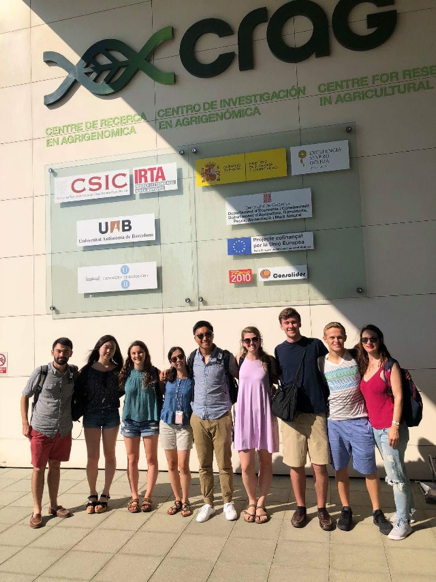 Day 11-14: Classes, CRAG visit, and Guest Lectures
Day 11-14: Classes, CRAG visit, and Guest Lectures
This week was my first, official full week of school, with both of my classes, BIOL316L and Intermediate Spanish, in full motion.
In my morning Spanish class, all my classmates come from a wide range of places, including Oregon, Texas, and even Canada! While the initial classes have been mostly grammar review, I can feel my speaking skills improve as I utilize more of the language in class, though I’m nervous about my exams approaching next week.
In BIOL316L, we are beginning to advance in our genome annotations. In the class, we utilize a program called DNAMaster, which uses internal programs, and additional web-based programs and databases to perform analysis and annotations on phage genes. We complete daily lectures and labs to hone and refine our skills and understanding. While it is not easy, the challenges presented encourage a team-based, collaborative effort amongst my classmates, and we all try our best to help each other and succeed!
For BIOL316L this week, we visited the Centre de Recerca en Agrigenomica (CRAG) on the University of Barcelona campus. Focused on agricultural research, the facility was beautiful, with so much life (literally!) and light that floods the very modern research center. We listened to guest lectures by PhD students discussing their research on the genomes of potato and tomato plants and the importance of agricultural research. After, we toured the facility, including its labs and greenhouses, and talked with the staff. The overall experience was enlightening and an exciting memory to share with my environmental enthusiasts at home.
On Thursday, we also received a guest lecture by Dr. Susana Campoy, who also performs research at the University of Barcelona. While learning about her research was very exciting, I greatly enjoyed the initial portion of her presentation. Before explaining anything about her work, she ensured that every student understood the basics and great importance of studying phages in science. Knowing this made her research feel even more significant.
Day 14: Beach Relaxation
What is nice about our university’s campus is that it is very close to the beach, so after a hard week of classes, it seemed only right to go to one after our last class. There are multiple beaches along the coast. While Barceloneta is arguably the most well-known, our group took time to visit Nova Icaria and Somorrostro Beach, which I personally liked better due to the softer sand. The weather was enjoyable – with the sun not too strong and gentle, cool breezes. To our surprise, it actually rained later in the afternoon (it was always so sunny here; we thought it would never rain!) but during that time, we enjoyed pizza at a restaurant nearby. Being at the beach at night is also enjoyable, with not too many people around and an overall calmer ambiance. Some locals must have not finished celebrating San Juan (see last post for more info), as they were still setting off a couple fireworks!
Day 15: Shopping, Birthday, and Jazz
So, Day 15 was quite exciting because it was my birthday! While I was a little sad to spend it far away from home, the other students helped celebrate it with me.
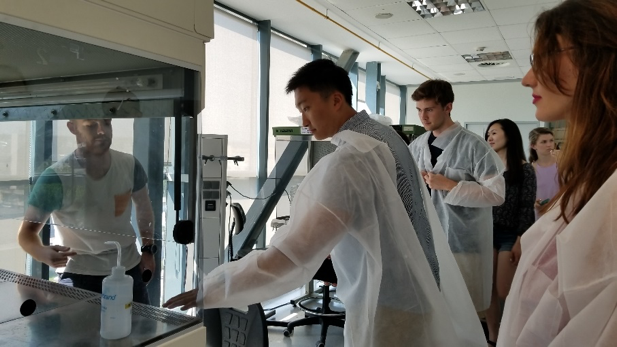 We spent the day shopping in L’illa Diagonal, a giant shopping center with several native and oversea brands that sell modern and casual clothing. I definitely felt a small hole in my wallet leaving the mall! We continued to shop more in Grácia, where there are several smaller stores and boutiques in the area.
We spent the day shopping in L’illa Diagonal, a giant shopping center with several native and oversea brands that sell modern and casual clothing. I definitely felt a small hole in my wallet leaving the mall! We continued to shop more in Grácia, where there are several smaller stores and boutiques in the area.
In the evening, our group had a cookout at the residence of two of our students. We made hamburgers that reminded us of home! We also ate a rich, raspberry chocolate cake from a nearby bakery courtesy of one of our students.
After, we visited the Harlem Jazz Club, which had a very cozy and lively atmosphere. A group called Orquesta Sazonando de Cuba played Cuban music with jazz nuances that had even listeners jump onto their feet and sway to the music.
Day 16: Staying at Home and Planning for the Future
While I didn’t do anything particularly noteworthy, I did take time to plan for my future adventures, so please look forward to my next post!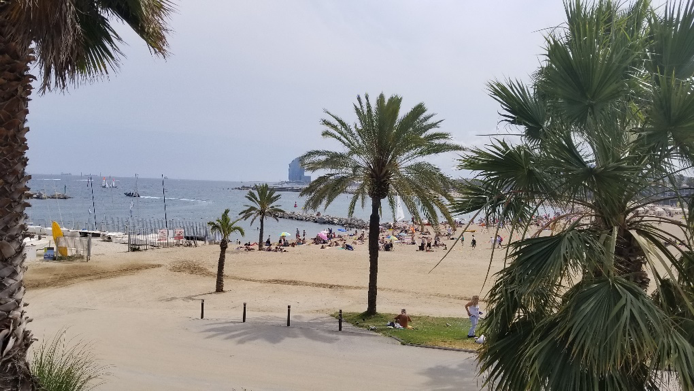
The Half-way Point
While the Ciutadella Campus is more focused on social sciences and the humanities, the UPF El Mar campus is centered around the life sciences and medicine. It houses the Barcelona Biomedical Research Park (PRBB), a beautiful beachside facility.
Alongside the interesting bioinformatics work that happens in the facility, I also greatly admire the philosophy and vision of the facility. Even though the way the building was designed and constructed, PRBB fosters a collaborative, team-based work environment. In addition, PRBB promotes an interdisciplinary perspective, where even scientists utilize artistic means to creatively approach and present their work. Not only that, but PRBB also values the social relationships and networks within the facility. In order to create a more comfortable space, they invite noted guest lecturers who simplify another field or concentration’s work, so others could expand their understanding of their colleagues’ work. Likewise, PRBB also holds volleyball games, a basement gymnasium, and other fun, social events.
Day 18: Guest lecture by Marc Valls of CRAGG
Another researcher from UB, Marc Valls also works with plant genome, and particularly, pathogens that contribute to withering. His work focuses on the study of identifying and researching about Type III systems and genes. While his work was beyond what I could honestly grasp since I have not yet taken my BIOL142 Evolutionary Biology course, Mr. Valls really tried to break down his process and to stress the importance of his work in agriculture. His research was like a glimpse of what I will soon study, which makes me even more excited for my future courses.
Day 19: 4th of July in Spain
Even though we are on the other side of the world, we felt it was only right as Americans to do our own, small 4th of July celebration. The staff reserved a table at Sal Cafe, a restaurant on Barceloneta beach. Typical of the country, it was a multi-course meal, with lots of delicious appetizers, entrees, and desserts. I ordered Fideua, a short noodle, seafood dish. From our table, we could see the amazing view of the beach, and as we all talked for hours, we could see the sunset.
Day 20: First Exam
Today was the day of my Spanish midterm and because this was the first exam I’ve ever taken abroad, needless to say, I was a bit worried. The test was reminiscent of our placement exam a couple weeks ago, taking a nice, well-rounded mix of reading, grammar, and audio testing. Although I was nervous, I survived!
Day 21: Gothic Quarter and Gaudí
Although I normally don´t have classes on Fridays, today, Spanish classes had class excursions to different areas in Gothic Quarter. While the Beginner and Pre-Intermediate courses visited a local market, the Intermediate Class visited La Casa de La Ciutat, the building for the Barcelona City Council that is opposite of El Palacio de la Generalitat and located in the literal center of the city. The exterior architecture was a work of art, with gargoyles and different facades. Likewise, the inside was even more beautiful. There were stained classes, statues, lights, and murals that decorated the inside. Although the entire tour was in Spanish, I enjoyed learning what I could about the historical and political significance of the building. Everything had purpose and meaning that ultimately culminated to what represents the foundation of what Barcelona is.
Fun fact: In Salo de Cent— personally, my favorite room because it reminds me of royalty – you can actually get married! As we departed from our tour, we passed by a quartet prepping for a wedding.
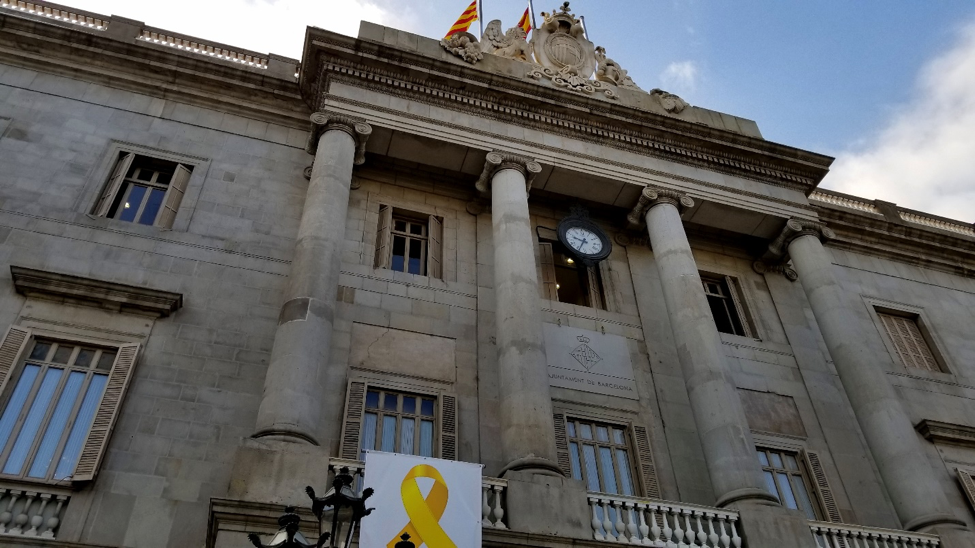 Fun Fact 2: Barcelona got its name from Hercules. When he landed on the Catalan coast, he was using the ninth ship, and therefore, the crew named the area Barca Nona (“ninth ship”).
Fun Fact 2: Barcelona got its name from Hercules. When he landed on the Catalan coast, he was using the ninth ship, and therefore, the crew named the area Barca Nona (“ninth ship”).
Friday was also a day I planned out for my group — a very, very condensed Gaudi tour. After lingering in Gothic Quarter, we walked to Palau Guell, located in La Rambla. Being on a budget, this Gaudi building was ideal because of its cheaper entrance fee. And certainly, Gaudi did not disappoint. His flexibility in style shown through the interior design, with different areas being more gothic, while others were more fun and colorful. This particular building was designed for party entertaining or relaxing, where Gaudi would invite choirs or guests to his home. I personally loved the roof because we could see so much of Barcelona, like the mountains of Montjuic or the towers of La Sagrada Familia. The mini towers at the roof were also so bright and interesting – every one was different. Afterward, we ended our trip with a quick visit to view the exterior of Casa Battlo (known for its blue-patterned exterior) and Casa Mila (known for its wavy architecture that reminds me of an ocean).
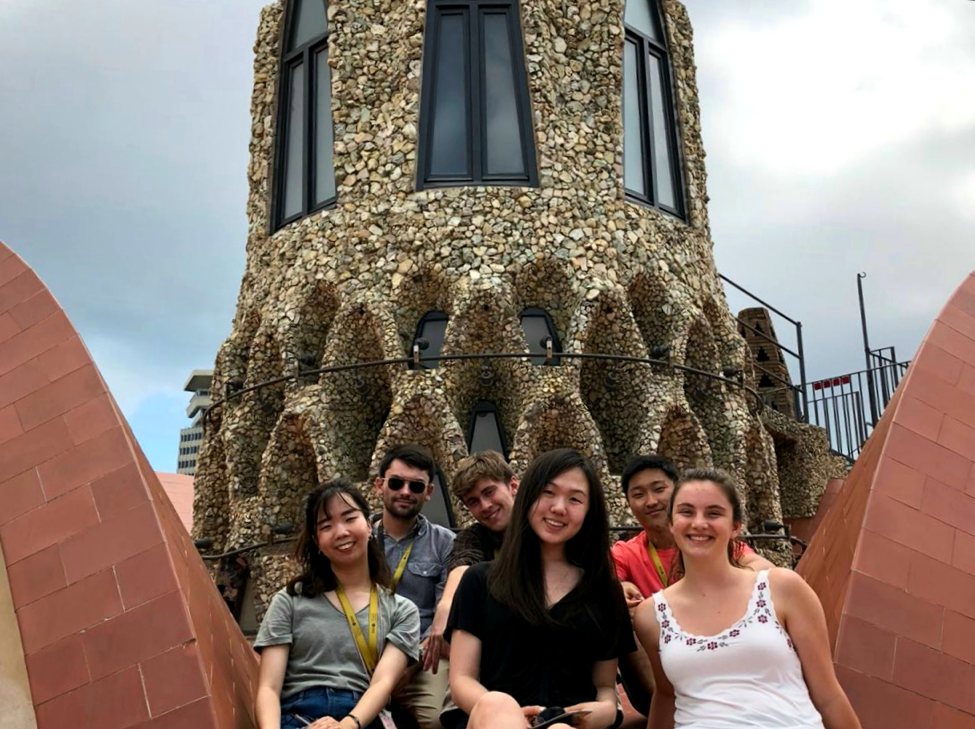
Day 22
During the day, I studied at the University to work on my assignments with my group and of course, afterward, many of us visited the beach nearby campus.
Day 23: Palo Alto Market
Per the recommendation of Helena, one of Academic Solutions coordinators, she recommended that we visit Palo Alto Market, a very trendy local market. Even upon the entrance, the market was breathtaking, with vine walls and roofs and so much nature within the walls of the market. There were also small fairy lights that decorated the stores and walls. Local vendors were selling their handmade apparel and jewelry, cheeses, teas, and foods at their stands that looked irresistible. There was also live music playing in different areas of the market. The overall ambiance of Palo Alto was very relaxed, as locals sat and enjoyed the company of their friends and the great food. Definitely, a local spot I’d recommend anyone to visit!
Beautiful Views and New Visits
Day 24: Somorrostro Beach
To start off my week, I went to Somorrostro beach with my group to enjoy my much-needed sun. Somorrostro is my favorite nearby beach for many reasons: it is only a 10-minute walk from campus, it has softer sand, and it is near the UPF El Mar campus – this means that eduroam Wi-Fi is also accessible on the beach! It’s perfect for when I want to stay outside but have some work to do that requires me to stay online.
Day 25: Hospital de Sant Pau
After classes, I went on a guided tour of Hospital de Sant Pau through BISS. The hospital was one of my most anticipated visits. While the “old” section is now a museum, it was still functioning until 2009 and the “new” area is still active.
Even the walk to the Hospital was beautiful since you can see the tip of the buildings peeking through its walls as you walk toward the entrance. While there are some architectural flaws in the structures that have shown due to its old age (built in 1901-1930), the thought that went into the design reflects a perspective of its time of design. For example, different focuses of medicine were split into buildings (as opposed to wings and floors in a modern hospital), and men and women were separated. The upper class had more private rooms while the poor were kept in the main room. The colors and tiles were bright and beautiful, with many natural and religious references that calm patients and appeal to visitors. The difference in the old health system versus the new at Sant Pau is an interesting and progressive representation of the improvement in medicine. Especially in Spain, where healthcare is more affordable, it shows how much more accessible services are for all people.
Day 26: N/A
Day 27: Instagram Takeover and Sala Gimbernat
As a part of my role as a Social Media Ambassador, I am responsible for organizing one Instagram Takeover through the @umbclife Instagram account (be sure to follow!). I selected a date that I believed best reflected what a typical day would be like. This includes both the academic aspect (classes) and a cultural or historical learning experience (excursion).
On the day of my takeover, we visited the Royal Academy of Medicine, which houses the Sala Gimbernat. A small museum found in la Rambla, this building was once where many anatomical dissections were held. There are various smaller rooms where dissections occurred, but the largest room is Sala Gimbernat, a surgical amphitheater. In addition, the building has a church to minimize the unholy impact of viewing outside and inside nude corpses by washing tools with holy water and through prayer. Likewise, female viewers in the amphitheater had to hide behind obstructions when viewing dissections because it wasn’t socially acceptable. Interestingly, all the gold details and red curtains didn’t exist in the past. Everything was of stone to maintain sanitation. In this building in the 18th century, Catalan medical students and doctors expanded their knowledge of the human body.
Day 28: Sagrada Familia and Picasso Museum
La Sagrada Familia is arguably the most well-known of Gaudi’s work and is perhaps the most popular tourist site in Barcelona. While the outside design is beautiful, with its different sides and towers, I looked forward most to going inside. And I was surely not disappointed.
Full of geometric shapes and colors, the interior of the church is absolutely stunning. I loved all the stain glass work – it looked just like a rainbow. It is critical to visit the late afternoon and evening (right before the sun starts to set) because that it when the colors are most vivid. The architectural detail in the columns and walls is also breathtaking. Everyone was left in awe as we exited.
So through my personal research, I learned that Museu Picasso tickets were free on Thursday evenings. Free tickets sell out incredibly quickly, so it is critical to reserve them four days prior. While it was sad that no photography is allowed inside the museum, it encouraged me to live even more in the moment. I’ve never seen so much Picasso in my life, and in so many styles, too! The museum accurately captures his changes in style that reflect different moments and key events in his life.
Day 29: Exam Study Day
Because we would be having our BIOL316L cumulative exam on Monday, our group took a day of our weekend to study.
Day 30: Montjuic and Magic Fountain
After spending the morning studying at the library, our group rode a bus up to Montjuic. We visited the Montjuic Castle that was once a military fortress. A square shape, from the top level of the castle, we could see so much of Barcelona. On one side, we saw the multiple buildings of the city; from another, we saw the sea; and from another, we saw the mountains. The fortress itself was also beautiful, with courtyards and plants. Most importantly, the historical significance of the castle for its roles in the Napolean and the Spanish Civil War. Furthermore, while very pretty, the castle was actually where many political prisoners (including Lluis Companys, president of Catalonia) were tortured or killed during Franco’s regime.
Afterwards, we went down Montjuic through the available cable cars. From up high, we had an amazing view of the city and of Montjuic, like its park and buildings below. While a short time, it felt like time stood still as we looked out the windows.
We ended our evening eating paella nearby the Arenas de Barcelona and walked to the Magic Fountain after sunset. Will colorful lights and movement, the fountain waters danced to music ranging from classical to even American pop. We closed our night with a quick treat of gelato.
Day 31: Sitges
Less than an hour, Sitges is a coastal town near the Mediterranean Sea. Popular with both tourists and locals, the city, like Barcelona, has its own charms, with its boutiques and beach. The beach at Sitges is quite possibly my favorite beach yet – the water was so clean and the sand was very fine and squishy. When swimming, we could see the fish in the sea! It was a great place to unwind and relax on a Sunday afternoon.
Ideally, I would recap my final week of experiences (Day 32 to 43), which include some of the most beautiful memories I have had in my 19 years of life: the gardens and sunset at Parc Guell; the echoing organ concert at Palau de la Música Catalana; the clear Mediterranean waters of Tossa de Mar in Costa Brava; and the maze of artworks in the National Museum of Catalan Art. Past the hecticness of final exams, I spent my final day in Barcelona seeing the early sunrise at Barceloneta, wandering in Gothic Quarter and Clot, and sitting in Parc de la Ciutadella.
On my final day, I also faced an unfortunate pickpocketing incident, resulting in the theft of my phone. In a blog intended to promote study abroad experiences, why would I write about a negative incident? Well, firstly, it’s a warning to my fellow students to always maintain a heightened awareness and caution when abroad. Secondly, and eminently, this incident taught me even more than I had anticipated.
While the event left a seemingly sour end to my trip, I realized that this unlucky moment is hardly representative of the vast experiences I had during my time abroad. The knowledge I have gained through cultural immersion and language learning has expanded my breadth of multicultural understanding. The knowledge I gained through the Phage Hunters Course solidified a foundation for inquiry, analysis, and critical thinking that will hopefully blossom into future research initiatives. I’ve learned about aspects of history, healthcare, and lifestyle that have influenced my own perspective of life. Most importantly, the people I met truly made the experience real. The relationships I formed with my professors, program coordinators, peers, locals, and host family were invaluable to my abroad experience. I realized that my stolen phone held merely images, but the actual experiences, with its emotions and enlightenment, are (cheesily) in my heart.
Looking back, if there’s any advice from Barcelona that I would share with prospective study-abroad students, then it would be the word, “vale”, the Spanish word for “okay.” This single phrase alone can lead to a waterfall of experiences. To brave past the barrier of doubt and to say “vale” to things that may seem unfamiliar, different, or even intimidating will indubitably pave the way to unforgettable memories. My only regret in Barcelona is that I wish I lived more, experienced more. Therefore, I hope that anyone who has read my entries is kindled with a flame of curiosity and wanderlust. Moreso, I hope that they will act upon this desire to experience, and that they will turn excitedly to their next adventure, saying:
“Vale!”
-Jessica Kweon, Phage Hunters Barcelona Summer 2018
